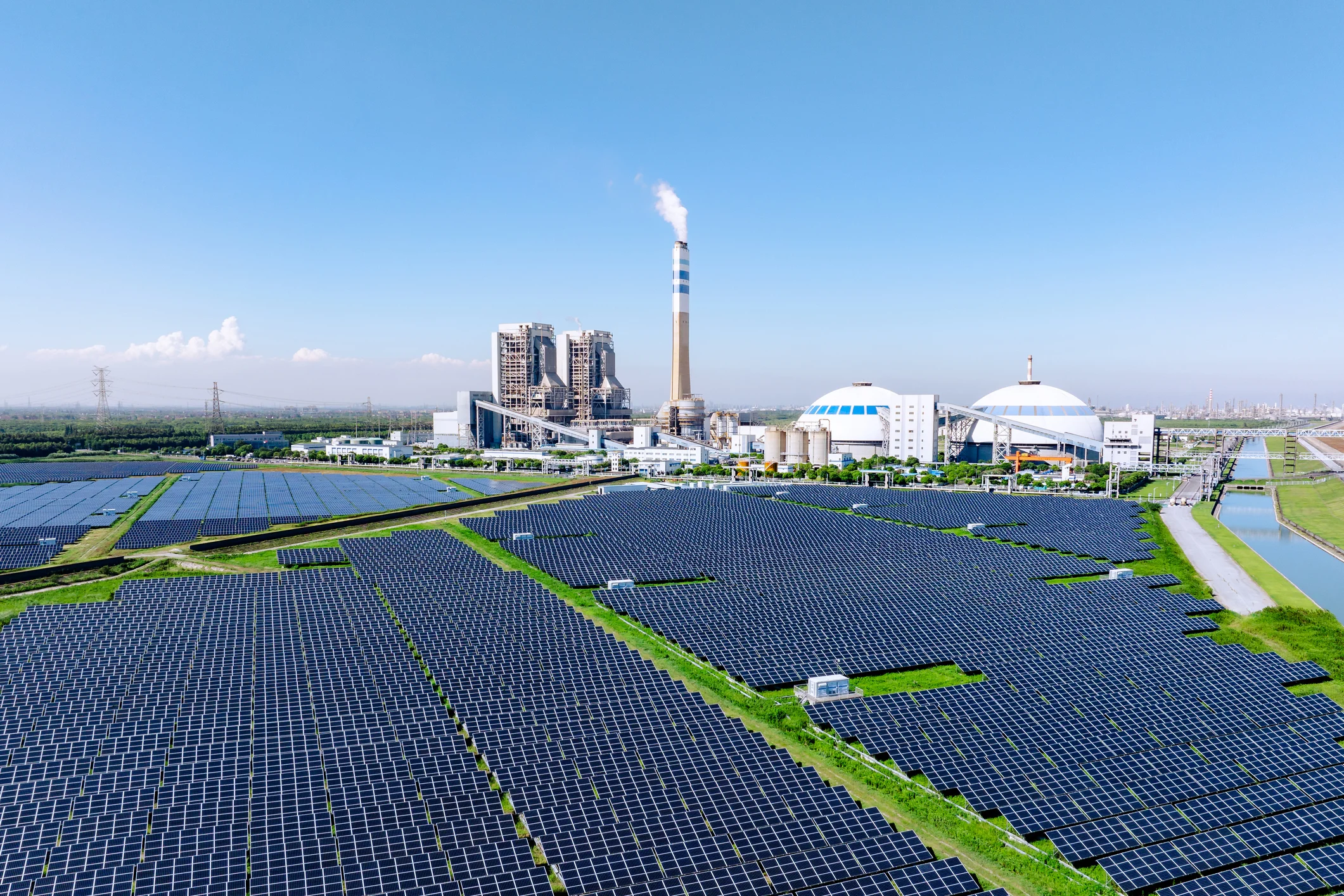In 2023, the Department of Energy called for between 80 – 160 GW of aggregate virtual power plant capacity by 2030 to meet rising electric demand. Last year, the MIT Technology Review lauded virtual power plants as an affordable strategy to help meet rapidly rising demand during the energy transition, which can lower operational costs while providing environmental and social benefits.
Recent efforts to defer fossil fuel plants are a strategic response imagined to balance supply and demand needs by continuing to rely on comparatively reliable fossil fuel plants. These efforts have already proven expensive, creating more—not less—problems for utilities; plants are often retired for their age, meaning these are not the most efficient generation units to begin with. Fossil fuel plants are driving up costs: fortunately, demand flexibility programs like demand response, EV charging, and virtual power plants have proven effective at reliably supplying power to the grid to meet peak demand, while decreasing customer bills and operational costs alike and enhancing grid resiliency.
The Problem With Fossil Fuel Retirement Deferments
In April 2025, the Department of Energy announced efforts to strengthen and enhance U.S. coal by working to improve coal technology and securing critical mineral supply chains. According to DOE Secretary Chris Wright, coal is essential for generating 24/7 electricity. In May, the DOE followed up on this commitment by deferring the retirement of a power plant in Michigan, ostensibly to enhance grid resiliency. Already, research indicates that these deferments will cost utilities an estimated $3.1 billion in annual costs, a figure that promises to rise as high as $6 billion if the DOE continues its deferral process.
These actions are underscored by real-world pressures, including supply chain and tariff issues, the rapid development and deployment of AI and data center projects, and the increased occurrence of volatile and extreme weather events. Demand is on the rise, and infrastructure upgrades are extraordinarily cost-prohibitive. Virtual power plants help supply resource adequacy at roughly 40% – 60% of the cost of new power plant construction, while offering an affordable way for utilities to keep pace with rising demand.
Why Fossil Fuel Plants Are Retired
Numerous factors drive the retirement or decommissioning of fossil fuel plants, including age, viability, and, to a lesser extent, environmental regulations. For coal plants, decommissioning is often the result of increased competition from lower-priced alternatives like natural gas.
– Syd Bishop, Sr. Content Specialist, Virtual Peaker
Energy transitions take decades to realize, a problem compounded by regulatory issues and market adoption rates, and planning for these changes is an equally long, but critical process. Furthermore, infrastructure upgrades could cost U.S. electric utilities more than $2.5 trillion, creating further reluctance to replace existing fossil fuel plants. As such, virtual power plants are a crucial and comparably quicker solution serving as a bridge between existing and emerging technologies.
The Future of Fossil Fuels
Make no mistake about it: fossil fuels will remain a significant part of the global energy portfolio for years, with research indicating that global energy consumption will rise by 56% by 2040. According to the Millennium Alliance for Humanity and the Biosphere (MAHB) at Stanford, the timeline for fossil fuels is relatively short, with around 30 years for oil, 40 years for gas, and 70 years for coal, during which time each resource will continue to become more expensive.
Virtual Power Plants & Grid Capacity
In general, grid capacity refers to the volume of power that an electrical system can reliably deliver at any given moment. As it relates to the entire power system, grid capacity can also mean the maximum amount of power generation available. Regardless, grid capacity ultimately measures both volume and availability to deliver, and rapidly rising demand stresses grid capacity and challenges grid operators to meet electric demand.
Virtual power plants help grid capacity challenges by leveraging distributed energy resources (DERs) like solar, battery energy storage systems, electric vehicles (EVs) and EVSE chargers, and smart home devices like thermostats and water heaters. Through the use of a distributed energy resource management system (DERMS), grid operators can aggregate these otherwise disparate resources to shift load to off-peak periods of demand or by accessing stored energy, redistributing those assets to meet demand.
Energy Conservation & Redistribution
Virtual power plants work in one of two ways: shifting load or redistributing communally-generated resources. Demand flexibility programs like demand response or EV charging are virtual power plant strategies that curtail energy consumption during periods of peak demand. In these instances, a DERMS is employed for device control, which is used to minimize energy consumption by decreasing temperature set points on thermostats or water heaters, or by shifting charging times to off-peak periods of usage. For devices like solar or battery energy storage systems, DERMS aggregate communally-generated energy to redistribute that into the grid during those same peak-periods of usage.
Reliability & Topline Demand Control
Again, the J.D. Power 2024 U.S. Electric Utility Residential Customer Satisfaction Study found that customers are overwhelmingly concerned with grid reliability and affordability, and for good reason. Analysis has found that the number of power outages in the U.S. has increased exponentially, driven in large part due to the increased occurrence of extreme weather events, and further challenged by energy-hungry projects like AI and data centers.
As mentioned, DERMS aggregate DERs, but not all DERMS are the same. Grid operators employ Grid DERMS, which manage utility-held energy assets like solar and battery installations. By contrast, Grid-Edge DERMS aggregate behind-the-meter DER assets found in places like residential, commercial, or industrial properties. Generally speaking, grid operators rely on Grid DERMS, which are employed more frequently because they are a known quantity: grid operators can depend on their output.
Until now, the behind-the-meter DER assets required for a virtual power plant have been considered less reliable, representing an unknown quantity with numerous variables. Topline Demand Control is designed to address this disparity by optimizing devices at a granular level. TDC functions through the combination of the Shift Grid-Edge DERMS, forecasting software, AI, and model predictive control, which yield reliable energy outcomes for grid operators. Utilities can request a desired load shift, and Topline Demand Control will realize those parameters, yielding a reliable outcome.
Energy Arbitrage
Unlike fossil fuel plants, demand flexibility programs like virtual power plants offer a simple path to savings through energy arbitrage. Energy arbitrage is the strategic purchase of energy during off-peak periods of consumption for use during peak demand grid events. These practices are especially useful as power purchase agreements continue to rise in cost, locking in higher costs for utilities and consumers alike.
Conclusion: The Case For Virtual Power Plants
Fossil fuel plants are demonstrably reliable as an energy resource and will remain a significant portion of the global energy portfolio for the foreseeable future. Unfortunately, the cost of fossil fuels will only continue to rise, while the operational efficiency of existing fossil fuel power plants will continue to decline, further driving up expenses. Virtual power plants offer a promising and reliable alternative to meeting rising demand that is both more cost-effective to design and deploy and has lower long-term operational costs. Furthermore, while supply chain issues and tariffs are challenging renewable energy spaces, these technologies will only continue to become more prevalent with time, especially as fossil fuels become increasingly untenable to secure. And remember: so long as customers are educated, virtual power plants can scale infinitely to meet demand.






